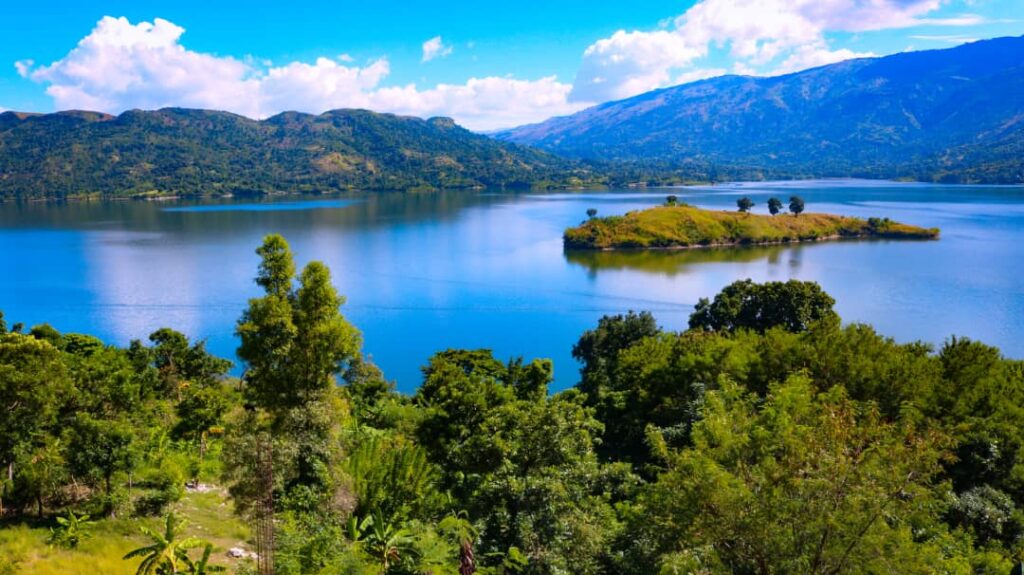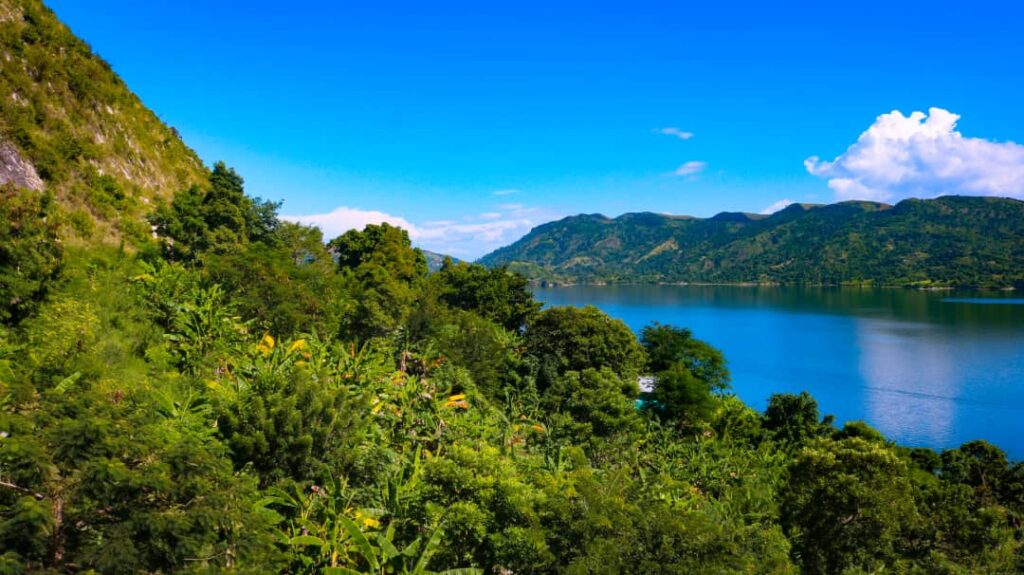
PÉLIGRE LAKE
Description
Built on the Artibonite River (the longest river in Haiti), Péligre is a hydroelectric power station located in the Center department of Haiti, 52 km from Port-au-Prince and 9 km from the city of Mirebalais. It is the second largest lake in Haiti after the Saumâtre Pond, also called “Lake Azuéi”. Designed in 1950 by President Dumarsais Estimé, Péligre Lake was built by the United States Army Corps of Engineers and financed by the US import-export bank Eximbank, as part of a vast agricultural project launched in the 1930s. with the aim of supplying water to approximately 32,000 ha. of land in the Artibonite Valley. This artificial lake was completed by President Paul Eugène Magloire and later inaugurated by President Jean Claude Duvalier. Lake Péligre stores a volume of water estimated at 620 million m³ (Jean André Victor, 1982). The water level of the lake is variable with a fluctuation of 22 m and its maximum depth can reach 172 m during the months of October, November and December. At 72 m high and 328 m long for an area of 48 km², Lake Péligre has a hydroelectric power station consisting of three turbines with a capacity of 15.5 megawatts each and produces an average of 45 MW. Péligre Lake was classified as “Péligre Reserved Area of Strategic Interest” in 2015.
Biodiversity
Filled with relatively dark water, Péligre Lake has the particularity of being fed by hydrographic basins that are upstream and downstream of its extension. Its aquatic and semi-aquatic vegetation is very little developed there, but its color (yellowish green) indicates the presence of Chlorophyceae that enrich its phytoplankton. This large lake offers rather green colored waters due to the important development of plankton found there. This color results from organic matter and indicates the fertility of the lake and favors the development of aquatic fauna. Despite the lack of information available on the flora and fauna of this lake, scientists have reported that its little-studied fauna contains species such as freshwater crabs and river crayfish “Kribich or Oma”. Its aquatic fauna is made up of six or seven species of fish, three of which are introduced: Mozambique tilapia (Oreochromis mossambicus), common carp (Cyprinus carpio) and bigmouth sleeper (Gobiomurus dormitor). The first two were introduced by the Ministry of Agriculture in 1952. The local names for these three fish are moro, poisson noir (black fish) and teta. If local self-consumption by fishermen were included, the percentage of “tetas” would be higher because they represent the preferred species for consumption.
Ecotourism potential
It is difficult, if not impossible, to take the direction of the city of Hinche without being tempted to enjoy this picturesque landscape that dominates the magnificent lake of more than 3,500 hectares of unknown and unexploited water since its creation. Stretching as far as the eye can see, this expanse of water offers a sense of inhabiting nature to anyone who visits. This important ecotourism site could become a source of wealth for the local population through the development of tourism, sports activities, sustainable fishing and can serve as a training place to introduce children and youth to the school of nature.


